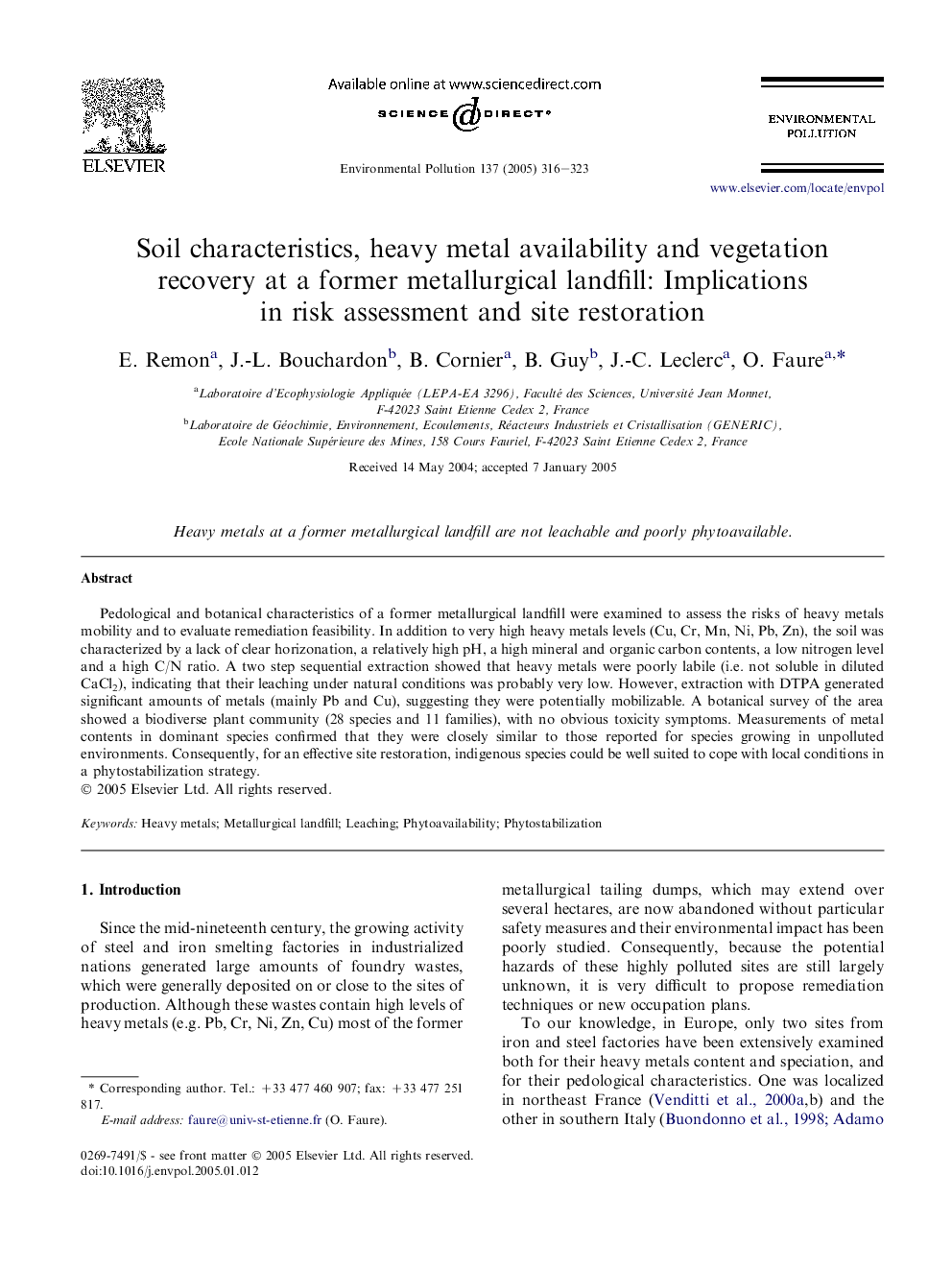| Article ID | Journal | Published Year | Pages | File Type |
|---|---|---|---|---|
| 9456208 | Environmental Pollution | 2005 | 8 Pages |
Abstract
Pedological and botanical characteristics of a former metallurgical landfill were examined to assess the risks of heavy metals mobility and to evaluate remediation feasibility. In addition to very high heavy metals levels (Cu, Cr, Mn, Ni, Pb, Zn), the soil was characterized by a lack of clear horizonation, a relatively high pH, a high mineral and organic carbon contents, a low nitrogen level and a high C/N ratio. A two step sequential extraction showed that heavy metals were poorly labile (i.e. not soluble in diluted CaCl2), indicating that their leaching under natural conditions was probably very low. However, extraction with DTPA generated significant amounts of metals (mainly Pb and Cu), suggesting they were potentially mobilizable. A botanical survey of the area showed a biodiverse plant community (28 species and 11 families), with no obvious toxicity symptoms. Measurements of metal contents in dominant species confirmed that they were closely similar to those reported for species growing in unpolluted environments. Consequently, for an effective site restoration, indigenous species could be well suited to cope with local conditions in a phytostabilization strategy.
Related Topics
Life Sciences
Environmental Science
Environmental Chemistry
Authors
E. Remon, J.-L. Bouchardon, B. Cornier, B. Guy, J.-C. Leclerc, O. Faure,
